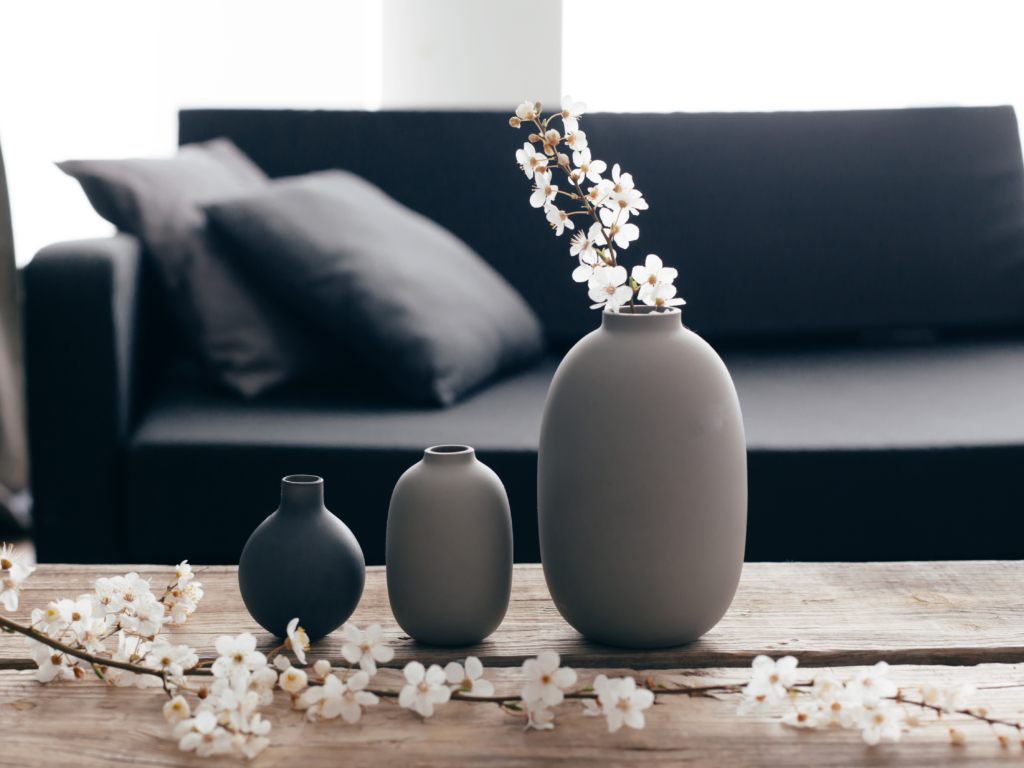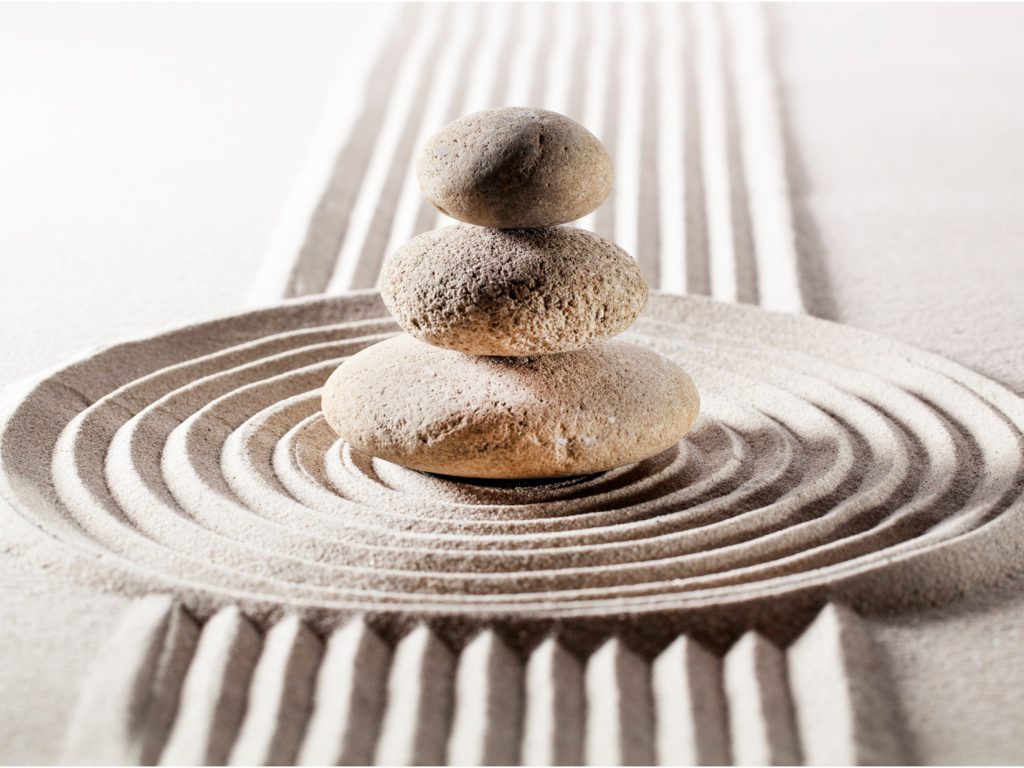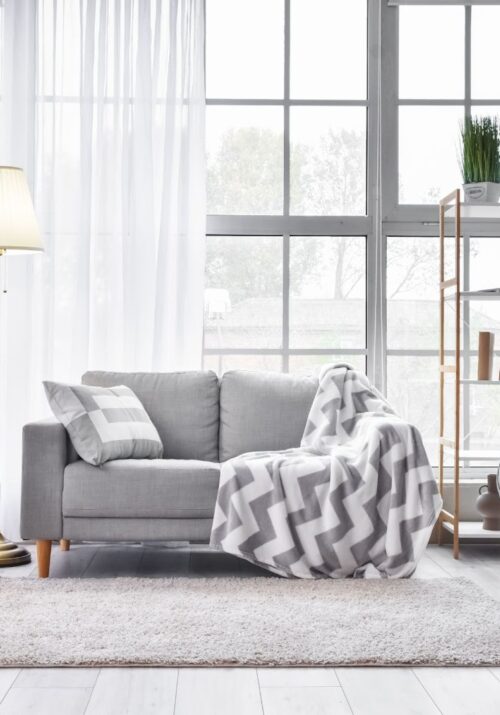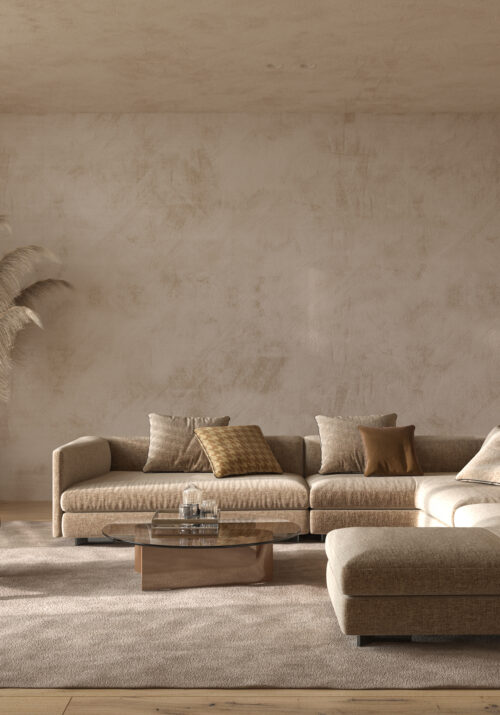
Looking to fill your home with positive energy and tranquil vibes? Allow the design philosophy of Feng Shui to lend a helping hand. As a years-old practice that uses chi flow, Feng Shui promotes calm interiors by removing blockages, allowing forces to flow freely, and blending nature into the home.
But how exactly is good Feng Shui cultivated in your home? What rooms do you start with? What if your room is already decorated? What things should be avoided? Thankfully, it isn’t too complicated—understanding the basics and implementing a few smart tips (as discussed below) is all you need to kickstart a journey to a calmer and more energizing environment at home.
What is Feng Shui?

Feng Shui is a Chinese practice that uses the flow of energy, chi, to create a balance between an individual and their environment. It is a metaphysical philosophy that aims to help you understand your home with regard to the five principles of Taoism: earth, fire, wood, water, and metal.
Remember, Feng Shui is not some sort of decor. It is principles and ideals that inspire your interior design choices in a Feng Shui way to create home harmony through balanced decor.
Main Principles of Feng Shui
Yin & Yang Energies This refers to the concept that energies are opposite yet complementary. Yin is passive and feminine energy, while Yang is more active and masculine energy. When applying this to home decor, you have to make sure to create a balance between opposite elements, such as cool and warm, dark and light, etc.
The 5 Feng Shui Elements (listed above). Each element affects how you feel in the space. Wood represents growth, fire symbolizes passion, earth signifies stability, metal represents clarity, and water symbolizes abundance.
Bagua Map The map divides the space into 9 areas, with each portion representing a particular human experience, such as career, health, and family.
Colours The Bagua map also helps guide your colour choices. The wealth area of your home (perhaps the office) can use purples, blues, and greens, as they’re commonly linked to prosperity.
The Commanding Position focuses on the placement of your bed, desk, and stove to ensure a layout that gives a clear (ideally diagonal) view of the door and allows for smooth energy flow.
Mirrors are used when you’re struggling to create the right Feng Shui layout. For example, if you can’t find a suitable position for the desk (i.e., a position where you can see the door while seated), consider hanging a mirror behind the desk. This will give a clear reflection of the door, making sure you welcome positive chi flow.
Now, how exactly do you introduce the principles of feng shui to your home decor? Here are a few basic Feng Shui tips to get you started.
Adjust Furnishings to Commanding Positions
One of the basic and most important principles of Feng Shui is to make the most of commanding positions. In simple terms, the furniture placement should be such that it welcomes positive energies and avoids any possible negative energies.
Essentially, this relates to the positions of three important furnishings, such as:
- The bed, which represents you
- The desk, which represents your career and path in life
- The stove, which represents your wealth
Place these pieces so you can see the door when you sit on them or work behind them. However, avoid positioning them directly in line with the door. The ideal arrangement is a diagonal view. This gives you a clear picture of the surroundings and promotes the optimal flow of positive energy.
Feng Shui also believes in strong backing. So, it is recommended to position the headboard of the bed and one side of the desk against a wall to ensure strength and security.
Spruce Up the Entryway
The entryway is referred to as “the mouth of chi,” the place where maximum chi enters your home—so that’d be the first step you’d want to spruce up.
First and foremost, declutter the space. You don’t want positive energies being blocked. But remember, this doesn’t mean your entryway has to be bare. Look into minimal decor that encourages a smooth flow of positive energy. Next, make sure the space is well-lit. Add more fixtures, change the existing bulbs, and bump out an extra window, if possible.
Proceed with thoroughly cleaning up the space. Dust and mop the floors, and don’t forget to wipe the door. Now, take a look around and evaluate what you can add or subtract to enhance a calm, inviting atmosphere. Does the space need a “Welcome” mat? Should you add a few houseplants? Is there space for a bit of wall art? Every effort—big or small—contributes to creating a harmonious home design.
Pick the Right Colours
Feng Shui colours mainly revolve around neutral, earthy tones like brown, yellow, and clay. However, a successful colour palette is one that follows the 60-30-10 rule, with a dominant color used in 60% of the room, secondary color in 30% of the room, and 10% for the accent color.
To build such a palette, feng shui experts recommend drawing shades from the zones created by the bagua palette and harmonizing them with the colors of the five feng shui elements. Examples include;
- Green and brown for the wood element
- Red, orange, and bright yellow for the fire element
- Earthy tones (beige, terracotta), yellow, and brown for the earth element
- White, gray, metallic tones (silver, gold) for the metal element
- Blue and black for the water element
Now, consider the zone you’re decorating. Is it a bedroom that requires calming hues like beige? Is it a study nook that needs brighter shades like red? The answers will then determine the overall color palette of an interior that revolves around balance and harmony.
Hang Mirrors
Mirrors are a common decor element used in almost every home—but there are a few things to look out for when following the Feng Shui principles.
First, every mirror in the home should allow you to see your entire head, chest line, and shoulders to ensure you ‘capture your entire aura.’ Second, be mindful that a mirror will double the energy of whatever it reflects. So, the mirror should be hung in front of something positive and beautiful, like lovely houseplants, instead of something vain, like exposed electric wires. Lastly, avoid hanging mirrors over a bed or sofa because Feng Shui is all about feeling safe and creating a harmonious home design. Wouldn’t you feel otherwise with something hung right on top of your head?
Embrace the Beauty of Nature
A key element of Feng Shui is a deep connection to nature—and what better way to hook up with nature than to embrace greenery throughout your home? The best part? It’s a super affordable solution that introduces vitality, freshness, and rejuvenating vibes to every interior.
The key is to opt for plants that are easy to care for, such as the ZZ plant, peace lily, and pothos. Evaluate the environment in your home (such as the available light, temperature in different rooms, and oxygen levels) to see which species are easier to support.
Declutter Pathways
Feng Shui is all about decluttering and creating more space—particularly in pathways, such as that from your bed to the bathroom or the study to the kitchen. Do you find obstacles hindering movement? Do you have to squeeze your way through small areas?
If the answers are affirmative, it’s time for a major rearrangement and decluttering session. Remove all unnecessary items and keep only those with purpose and meaning. Invest in good storage solutions, like baskets, floating shelves, and multi-functional furniture.
The purpose is to ensure smooth circulation around the house for yourself. Only then will good energy be able to flow around, too!
Focus on Feng Shui Remedies
Water, being a symbol of wealth, is an effective way to allow positive energy to pour into your life.
Feng Shui remedies, such as wind chimes, indoor tabletop fountains, and fish tanks, are simple solutions that add to the overall harmonious home design. Bonus points if you strategically place a few bagua mirrors to reflect the lovely views of the tranquil Feng Shui elements.
Final Words
Your home is where you rest, rejuvenate, and recharge—and you can make the most of this experience by implementing simple Feng Shui principles.
Experience the magic and share the fascinating Feng Shui tips with others!



